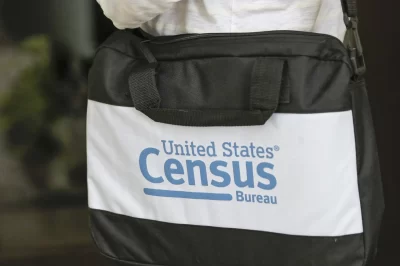
Major corporations in water-guzzling industries such as clothing, food, beverage and technology want to be better stewards of the freshwater they use — especially as drought, floods and other extreme weather intensified by climate change threaten their supply chains. But of 72 companies ranked by a sustainability nonprofit over the past year, few are close to achieving 2030 goals set by the nonprofit.
Last year, Ceres launched an effort to press companies with large water footprints to protect those resources and address related financial risks. On Wednesday, the group released an analysis that included such powerhouses as Coca-Cola, General Mills and Amazon.
“There’s no doubt that companies need to do better,” said Kirsten James, senior program director for water at Ceres.
Ceres said the companies were chosen from the four sectors based on factors including size and their impact on water. They were ranked based on a variety of factors, including commitments to protect the quantity and quality of the water they use, as well as the ecosystems that supply it. They were also assessed on whether they helped improve access to water and sanitation in communities where they do business. Ceres drew on publicly available information, including the companies’ filings and other voluntary disclosures through March.
None of the companies scored above 70% of the points available. Almost a dozen scored well enough to be rated “On Track” to meeting the goals, with at least 50% scores.
That included Coca-Cola, which said its water use in 2022 was 10% more efficient compared to 2015. The company said it aspires to have 100% circular water use — where every bit of water is used and eventually returned to the watersheds it has drawn from — at 175 locations by 2030.
“The agricultural ingredients that we use use vastly more water to produce than the actual manufacturing process,” said Michael Goltzman, vice president of Coca Cola and a sustainability head. “And it doesn’t really matter where you are in the world.”
The index was produced with funding that included a grant from the Coca-Cola Foundation, a separate entity from The Coca-Cola Company. Ceres said the index wasn’t funded directly by any of the companies evaluated, and said its work isn’t influenced by funders.
Tech companies like Amazon and Apple, meanwhile, need large amounts of water to cool the computers in their sprawling data centers. The Ceres index had both companies below 20% progress toward the nonprofit’s targets.
Amazon spokesperson Kelly Nantel disputed the Ceres findings, saying it was “an inaccurate reflection of both our commitment and progress toward becoming water positive.”
Apple did not respond to a message.
Food company General Mills was among the companies furthest along in meeting the 2030 targets, at 65%.
Mary Jane Melendez, the company’s chief sustainability global impact officer, said 85% of the company’s water use is in agriculture. And extreme weather in the U.S. has affected the company in recent years.
“We are seeing that there are challenges in getting ingredients out of the ground when these extreme weather events are hitting our key sourcing regions,” said Melendez. She cited freezing and thawing that has hurt the company’s sourcing of sugar beets and drought that has hit its oats supply.
Michael Kiparsky, director of the Wheeler Water Institute at the University of California, Berkeley, said that corporations’ self-interest in protecting their operations from water vulnerability could motivate them to take bigger steps to protecting freshwater resources.
“Is there any official legal accountability to Ceres’ metrics and reporting? Absolutely not. Does money talk? When it talks, it talks pretty loud,” Kiparsky said.
James, of Ceres, said the nonprofit hopes to update its findings every two years.







